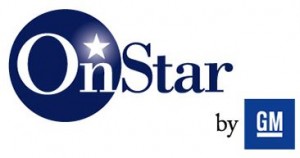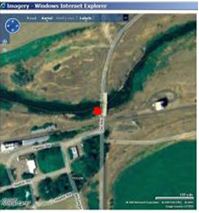 The cars themselves may still have a long way to go, but some recent announcements about what OnStar can do are amazing. OnStar being the service offered by General Motors that incorporates GPS and communication into vehicles – particularly useful in crash situations (though they can also unlock your car for you if you lock the keys in the car). Not so long ago, OnStar started advertising that when a vehicle is in an accident, OnStar will immediately put a phone operator in touch with the onboard communications center in the vehicle to determine if the driver is conscious and if they need emergency assistance. The ad showed the phone operator on one half of the screen saying something like “do you need help?” and the injured driver responds “yes.” From there, because the operator has the GPS information they can transmit the coordinates to local emergency teams. I also learned that OnStar recently switched to Microsoft Virtual Earth for mapping to better visualize and communicate the precise location of the accident. All very impressive.
The cars themselves may still have a long way to go, but some recent announcements about what OnStar can do are amazing. OnStar being the service offered by General Motors that incorporates GPS and communication into vehicles – particularly useful in crash situations (though they can also unlock your car for you if you lock the keys in the car). Not so long ago, OnStar started advertising that when a vehicle is in an accident, OnStar will immediately put a phone operator in touch with the onboard communications center in the vehicle to determine if the driver is conscious and if they need emergency assistance. The ad showed the phone operator on one half of the screen saying something like “do you need help?” and the injured driver responds “yes.” From there, because the operator has the GPS information they can transmit the coordinates to local emergency teams. I also learned that OnStar recently switched to Microsoft Virtual Earth for mapping to better visualize and communicate the precise location of the accident. All very impressive.
The part that got me really excited is something I saw advertised in the paper today. They call it Injury Severity Prediction and I think this is a great example of changing a “how” in emergency response and in a way it parallels things like the ATM and airport check-in today, but I will get to that in a moment. We know that the auto industry has all kinds of statistics on crashes and how much worse you will be injured if you aren’t wearing your seatbelt or how different a side impact is versus a head on, and how much speed impacts injuries, and so on. Well, from what I can tell, OnStar is now taking a lot of that data and putting it in the car, and when the car is in an accident, the car takes the equivalent of a data snapshot of that information at the point of impact (are they wearing seat belts, head on or not, what speed, etc.) and communicates that back to the OnStar operator immediately and they can then instantly make some pretty good assumptions about the severity of the accident and communicate that objective, trustworthy data to emergency teams so they can be sure to take the right equipment. In a situation where what matters is accurate and timely communication, this is a brilliant application of statistics and technology. “How” the information gets to emergency crews gets much better and faster.
So how is this similar to the ATM and airport check-in? Those are both cases where work was “outsourced” to the customer, where the customer now does the work of the bank teller and the passenger does the work of the airline employee. With OnStar Injury Severity Prediction we have a case of the communication being “outsourced” to the car in a way that is a lot faster, a lot more reliable, and in cases where the driver is unconscious it makes something possible that wasn’t imaginable ten years ago. Bravo OnStar.
Now why don’t you loan some of your smart people to other areas of GM to help them rethink other parts of the business.
-Ric

Leave a Reply